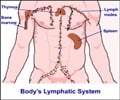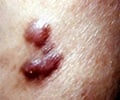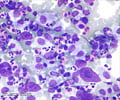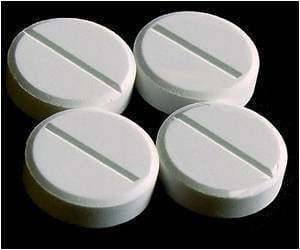In a national clinical trial, a national drug shortage has been linked to a higher rate of relapse among children, teenagers and young adults with Hodgkin lymphoma enrolled.

Estimated two-year cancer-free survival for patients enrolled in the study fell from 88 to 75 percent after the drug cyclophosphamide was substituted for mechlorethamine for treatment of patients with intermediate- or high-risk Hodgkin lymphoma. The study was launched before the drug shortages began. The change occurred after a mechlorethamine shortage began in 2009. No study patients have died, but those who relapsed received additional intensive therapy that is associated with higher odds for infertility and other health problems later.
An analysis comparing how patients in each group were faring two years after their cancer diagnoses will appear in the Dec. 27 edition of the New England Journal of Medicine. The report provides the first evidence of a drug shortage adversely impacting treatment outcomes in specific patients. St. Jude led the study for a national group that includes the Stanford University School of Medicine and Lucile Packard Children's Hospital at Stanford; Dana-Farber Cancer Institute and Boston Children's Hospital; Massachusetts General Hospital; and Maine Medical Center.
In recent years, many patients and caregivers have had their medical care complicated by drug shortages, primarily of generic injectable drugs like mechlorethamine. Mechlorethamine, which has been used in cancer treatment since the 1960s, has only recently become available again.
Cyclophosphamide has been widely used in treatment of both adults and children with Hodgkin lymphoma. Based on earlier studies, the drug was considered a safe and effective alternative to mechlorethamine.
"This is a devastating example of how drug shortages affect patients and why these shortages must be prevented," said Monika Metzger, MD, an associate member of the St. Jude Department of Oncology and the study's principal investigator. "Our results demonstrate that, for many chemotherapy drugs, there are no adequate substitute drugs available."
Advertisement
"This puts a face on the problem of drug shortages and shows that the problem is real, not theoretical. This is about a curative therapy that we were unable to administer because the drug we needed was not available," Link said. "Despite heroic efforts by the drug shortage office of the Food and Drug Administration to solve the shortages of a number of medically necessary drugs, it is clear that patients are still suffering from the unavailability of life-saving drugs. A more systematic solution to the problem is needed."
Advertisement
Hodgkin lymphoma is a cancer of the lymph system and accounts for about 6 percent of childhood cancers. In the United States, about 90 percent of patients will become long-term survivors. Working as the Pediatric Hodgkin Consortium, in 2002 the five institutions involved in this study adopted a seven-drug chemotherapy regimen that included mechlorethamine for the treatment of high-risk pediatric patients. The goal was to preserve high cure rates, but to reduce the risk of second cancers, infertility and other problems associated with the earlier treatments. In 2006, a parallel study was opened for patients with intermediate-risk disease. The risk categories reflect the extent to which cancer has spread, particularly the number and location of lymph nodes involved, plus the presence of unfavorable symptoms of fever, night sweats and unexplained weight loss.
The strategy involved 12 weeks of the seven-drug chemotherapy regimen. Patients also received radiotherapy with the dose based on their response to chemotherapy. When mechlorethamine became unavailable, the protocol was revised to allow the cyclophosphamide substitution.
Outcomes for cancer patients are often measured in terms of cancer-free survival, which is the number of years patients remain free of the disease. When researchers assessed the substitution's impact, they found that estimated disease-free survival was 88 percent for the 181 patients whose treatment included mechlorethamine. It was 75 percent for the 40 patients who received cyclophosphamide instead. The difference led researchers to stop enrolling new patients in the trials.
"We can think of no credible explanation for this dramatic difference in event-free survival other than the drug substitution," the researchers noted. The analysis found that, as a group, patients who received cyclophosphamide had fewer unfavorable symptoms and were more likely to have intermediate-risk, rather than high-risk Hodgkin lymphoma. The patients ranged in age from 3 to 21. Half were age 14 or younger.
Patients who relapsed received additional therapy. Researchers said it is too soon to know if these patients will have the same long-term survival rates as those whose did not relapse. The additional treatment included intensive chemotherapy followed by a stem cell transplant using the patient's own blood-producing stem cells.
Source-Eurekalert












